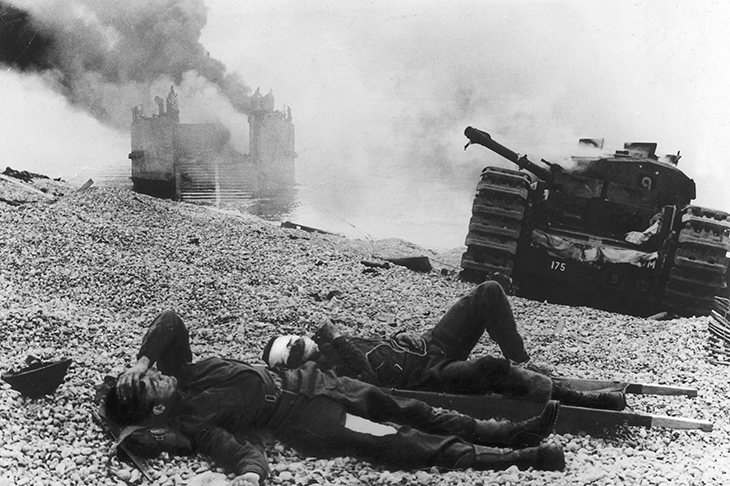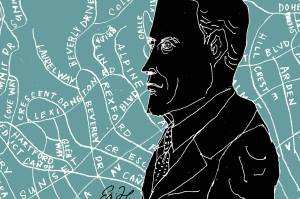In carefree days which now seem so distant we used occasionally to take the Newhaven-Dieppe ferry. Docking after a long lunch, I would try to imagine the port during the infamous Dieppe Raid of August 1942. It is so clearly a natural defensive position that I could never work out how they expected to take it or, more importantly, why. This book sets out to answer both questions and, thanks to the release of previously classified wartime files, largely succeeds. It also throws new light on Ian Fleming, who was there.
Dieppe in those days was intensively fortified by the Germans, flanked by heavy guns on the cliffs. Just about every inch of the docks was covered by concealed machine guns and cannon, including a captured French tank. It was designed to repel exactly the sort of full-frontal attack the Allies — overwhelmingly Canadian, with British commandos and a sprinkling of Poles, Free French, Belgians, Norwegians and Americans — obligingly mounted.
Under the overall command of Mountbatten, chief of combined operations, this was a far larger raid than any previously attempted — about 6,000 men, 250 ships and boats, more than 30 Churchill tanks and enough aircraft for 70 pilots to be killed or missing and 106 planes shot down. It was also highly complex, with the different elements requiring to-the-minute timing, the failure of any one of which affected all others. Planning was about what we would do, and took no account of what the enemy might do.
It was a disaster. Everything went wrong from the start. The crucial element of surprise was lost; timings went awry; communications failed; troops landed in the wrong places; the tanks never got off the beach; there was no effective fire suppression of the German guns. The young Canadians of the main assault force suffered 3,367 casualties, including 907 killed, a casualty rate of 68 percent. They had a man killed every 35 seconds of the raid. ‘What were you trying to do?’ a puzzled German interrogator asked the captured principal military landing officer. ‘If you could tell me…I would be very grateful,’ his captive replied.
The blame game has continued ever since, fueled by the fact that no one could quote the original rationale for something that was too big for a raid, too small for an invasion. Was it to appease Stalin’s pressure for a second front; was it a practice run for bigger things; was it to give the Canadians something to do; was it to feed Mountbatten’s vainglory about his new gung-ho Combined Ops? As always with bureaucracies, no one carries the can for something that everyone is involved in.
David O’Keefe believes he has identified the original rationale — something not mentioned in wartime files either through ignorance or on security grounds. Searching through recent releases, he came across a phrase about a secret military unit, known as the Intelligence Assault Unit: ‘As regards captures, the party concerned at DIEPPE did not reach their objective.’ This set him off on a paper trail to establish what their captures and objectives might have been, and is why it takes 300 pages of his book to reach the raid itself.
[special_offer]
It is time well spent: a journey via the well-rehearsed Bletchley Park story to the role played by various ‘pinches’ (captures) of Enigma materials from sinking German vessels or commando raids. During 1942 the Germans added a fourth rotor to naval Enigma machines, which temporarily blinded the Bletchley decoders. Responding to the desperate need for further pinches, the IAU was conceived and run by Ian Fleming as a specialist commando unit for grabbing Enigma materials during raids. Fleming worked with the director of Naval Intelligence and was, it appears, far more actively engaged in planning raids on behalf of Bletchley than is commonly realized. He also remained commendably discreet; there’s no hint in his books that he was party to the Ultra secret.
O’Keefe’s thesis is that a pinch was the secret rationale for the Dieppe Raid, that it was a pinch by design rather than, as with other raids, a pinch by opportunity. In the event nothing was pinched, but his reasoning is sound, his research exhaustive and his argument persuasive — almost. There remains, however, a tincture of doubt. Not because there’s some other secret explanation, but because it seems likely that the idea of raiding Dieppe — because we could, because we’d done smaller raids and because bashing Jerry was a Good Thing — gained traction with Mountbatten and others before they alighted upon a pinch as its justification.
But who knows? They perhaps didn’t know themselves, and that was the trouble with the whole sad, wasteful affair. A couple of months later there was another, more successful, opportunistic pinch that solved the problem. O’Keefe does well to write such a lively and readable account of the disaster that preceded it.
This article was originally published in The Spectator’s UK magazine. Subscribe to the US edition here.


















